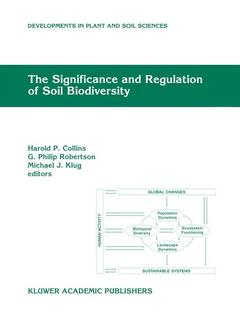The Significance and Regulation of Soil Biodiversity, 1995 Proceedings of the International Symposium on Soil Biodiversity, held at Michigan State University, East Lansing, May 3–6, 1993 Developments in Plant and Soil Sciences Series, Vol. 63
Coordonnateurs : Collins Harold P., Robertson G. Philip, Klug Michael J.

The volume addresses the extent and regulation of soil biodiversity and describes initial approaches to the linking of soil biodiversity and ecosystem function.
Audience: Researchers and students in a wide range of environmental scientific disciplines.
Date de parution : 10-2012
Ouvrage de 294 p.
19.5x26 cm
Disponible chez l'éditeur (délai d'approvisionnement : 15 jours).
Prix indicatif 158,24 €
Ajouter au panierThèmes de The Significance and Regulation of Soil Biodiversity :
Mots-clés :
Bur; Detritus; Ecology; Fauna; Flora; agroecosystems; biotic community; cyclin; ecosystem ecology; ecosystems; environment; microorganism; nitrogen; soil; soil fauna



